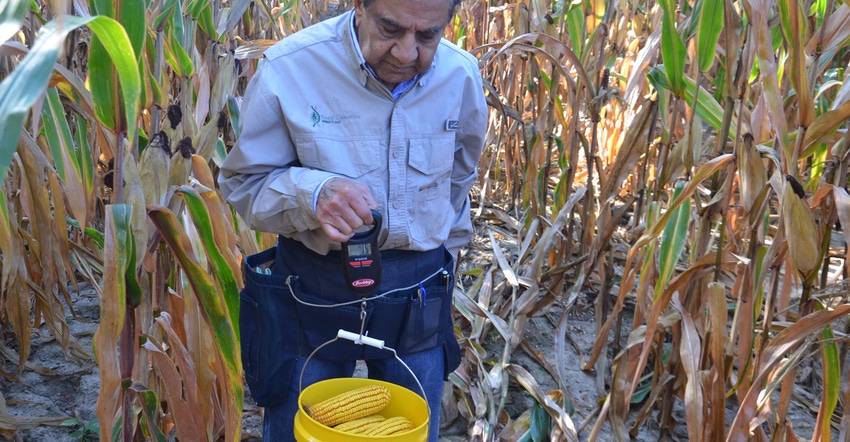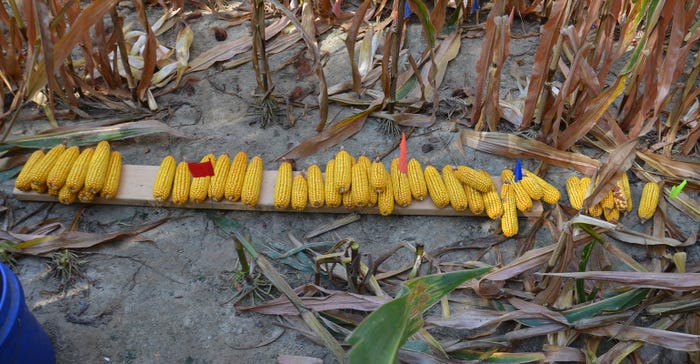
A new feature in the Corn Watch ’20 program was emergence plots, where plants in specific rows were flagged based on when they emerged. Different-colored flags marked plants that emerged on the same days, starting with the first day. The goal was to determine if plants that emerged later still produced ears, and if so, if the ears were as large as those from plants that emerged first.
First, note that this was a demonstration, not a replicated trial. In 10 side-by-side rows, 1/1,000 of an acre was measured off, and plants in those rows were marked based on which day they emerged. The first plants emerged on May 23, 10 days after planting. Plants were flagged each day afterward, with plants emerging on or after the fourth day receiving the same color flag.
Related: Early-season damage leads to potential for ear rots
“We followed these plots all year, and yes, some plants which emerged later struggled,” says Dave Nanda, director of genetics for Seed Genetics Direct. The Corn Watch ’20 field is sponsored by Seed Genetics Direct, Jeffersonville, Ohio.
“However, some plants which emerged four days or more behind the first plants still produced decent ears, and in a few cases, plants which emerged on time struggled, too. What we saw wasn’t as black-and-white as you might think.”

DIFFERENCES IN EMERGENCE: Ears on the left are from plants that emerged first. Each color to the right represents a day’s delay in emergence. There were differences, but less than expected.

Harvesting ears
In most rows, most plants emerged uniformly, often on the same day. In several rows, in fact, all but a couple of plants emerged together, making a statement about modern planting technology. However, in a couple of rows, emergence was spread over four or more days. Heavy rain occurred after planting, and soil appeared to wash over those rows. They may have also been pinch rows on the planter.
“We need to look closer at why a few rows don’t emerge uniformly while most do,” Nanda says.
Nanda and the author hand-harvested ears on these two rows and weighed ears with different flag colors representing different days of emergence together. Here are the average weights per ear:
First day: 0.59 pound
One day after: 0.64 pound
Two days after: 0.62 pound
Three days after: 0.49 pound
Four or more days after: 0.49 pound
Conclusions
“Plants which emerged within the first two days performed very well,” Nanda says. “In fact, weights from day one and day two were a bit higher than those emerging the first day.
“If you can get plants to emerge within a couple days of each other, it appears you should be OK. Ear weight tended to fall off for plants emerging three to four or more days late.”
However, the plot showed Nanda that more than uniform emergence is at play. “Plant spacing is just as critical, maybe more so,” he adds. “If a plant emerging late didn’t have a neighbor, it still did well. We must recognize that other factors influence individual plants besides just when they emerge.”
Read more: Ear size varies on late-emerging plants
About the Author(s)
You May Also Like




